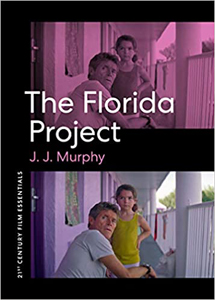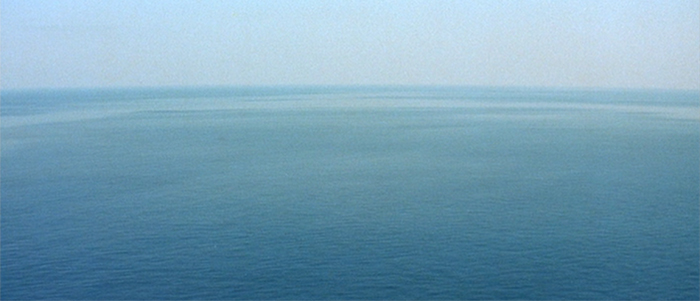Archive for December 2021
An elegant path into modern Asian cinema
DB here:
Nang is an anomaly in today’s film culture. A limited-edition magazine published only in hard copy, it carries no advertising, film reviews, or festival reports. It’s printed on exquisite, environmentally-sensitive paper, with binding that allows it to open and stay flat. It radiates casual elegance, and it’s devoted to modern Asian filmmaking. A preface explains:
Thanks to a unique group of guest editors and contributors, Nang broadens the horizons of what the moving image is in Asia, engaging its readers with a wide range of stories, contexts, subjects and works connected by the cinema.
This sounds fairly conventional, but Nang’s mission is also “to expand (the idea of) what a cinema magazine can be today.” This ambitious goal comes from this remarkable declaration of principles by Publisher and Editor-in-Chief Davide Cazzaro. He reveals Nang’s deep commitment to analog publishing and to quality, highly diversified content.
Cazzaro’s statement only hints at the riches within every issue.There are historical studies, such as Debrashree Mukherjee’s article on female barristers in Mumbai cinema and Chew Tee Pao’s account of archiving the Singapore feature Medium Rare. Experts such as Aaron Gerow, Jasper Sharp, Sam Ho, Victor Fan, Noel Vera, Darcy Paquet, Mark Schilling, and Goran Topalovic offer incisive, in-depth pieces. But this is no musty academic journal. There are cartoons, paintings, collages, and other forms of graphic art. There are poems and short stories as well: issue no. 3 is devoted to fiction.
Nang is passionately dedicated to honoring and understanding the creative process of filmmakers. Given my proclivities, I remain in awe of issue no. 5,”Inspiration,” which includes writings by and interviews with Mira Nair, John Woo, Jia Zhangke, Hou Hsiao-hsien, Tsui Hark, and many other directors. Me being me, I was especially keen to find out the Nair planned Monsoon Wedding by laying out “a sea of index cards” on her bed to keep the plot lines balanced.
No less revelatory is no. 6, “Manifestos,” which include previously untranslated manifestos from modern Asian film movements. There are documents from Taiwan, Indonesia, South Korea, India (Satayajit Ray, Ritwik Ghatak), the Philippines, and many other locales. There’s even serious consideration given to Kim Jong Il II’s 1973 On the Art of the Cinema, an effort by the North Korean dictator to specify the demands of a communist cinema. Each entry is graced by photos of hands cradling rocks.
Other issue topics are less clear-cut. “The Scent of Boys” is largely devoted to same-sex cinemas, but through an unusual route: writers were asked to reflect the sensory and sensual aspects of bodies and their interactions on the screen. Critics, historians, and filmmakers reflect on figures and films that have shaped their sensibilities. Issue no. 8, “Loud Mess,” is about “the power of transgression” in many dimensions–horror, eroticism, sound.
I really can’t do justice to the splendors on display in Nang. Go to the Blog page for a potpourri of articles and background on the editors. One concession to the digital realm: A ten-year look back at Nang. Most back issues are still available; go here to see the possibilities and browse some pages. Bargain-priced too, considering that these are in effect art books. But hurry: issue no. 9 is already out, and the next one is said to be the last.
Nang is an energetic, imaginative effort to open up new aspects of Asian filmmaking. Davide Cazzaro and his guest editors have given us a true labor of love–obviously, their love of Asian cinema, but also an acknowledgment of what many of us feel: This is one of the world’s greatest film traditions.
Thanks to Goran Topalovic for calling my attention to Nang and Davide Cazzaro for providing me sample issues!
An update about our blog
Contempt (Le Mépris, 1963).
DB here:
After fifteen years of fairly steady blogging, we suspended putting up new entries in early October. We were reluctant to go into explanations of a fluid situation, but now things are stable enough for us to set out what happened.
I had surgery for oral cancer in July and August, followed by brief hospital stays. My doctors, all excellent, have said and continue to say that my prognosis for recovery is good. After a hiatus of rest at home, when I posted two blogs, I went in for radiation treatments and chemotherapy. This process took six weeks and has left me very tired, while also dealing with side effects of the treatments and medications.
Since then, I simply have lacked the energy and concentration to write anything new. I try to find time for clerical cleanup work on my book manuscript, Perplexing Plots: Popular Storytelling and the Poetics of Murder. The plan is to submit it for production in March at Columbia University Press.
But Kristin, who has been devotedly taking care of me, and I now have a routine that should permit at least occasional blogging. She will of course provide her annual list of Best Films of the Year for 90 Years Ago, and she has some other ideas. I hope as well to offer something, though naps and streaming always seem to obtrude.
In some ways, there are a couple of substitutes for my blogging–both courtesy of Criterion. One is my video essay on Johnnie To Kei-fung’s Throw Down, “Hidden in Plain Sight.” A look at the movie’s characteristic narrative and stylistic strategies, it’s available on both the Channel and the blu-ray release. I’m grateful to Curtis Tsui, the producer, for asking me to do it; I now appreciate the film a lot more. The other bonus materials are extremely informative as well. If you haven’t seen Throw Down, what are you waiting for?
Before I went into surgery, I recorded two linked installments of our “Observations on Film Art” series. Both concern Godard’s use of aspect ratios. The first, on Vivre sa Vie, is available here. The second, on Le Mépris/Contempt, is here. I try to show how Godard exploits the differences between 4:3 proportions and the anamorphic widescreen format. (In a way, they balance the exploration of Godard’s late-career use of aspect ratios, seen in this blog entry.)
Kristin and Jeff Smith weren’t idle during our hiatus. The Channel released her analysis of the road motif in Pather Panchali and Jeff’s study of Agnès Varda’s editing in Le Bonheur. More installments are planned, of course. We appreciate our loyal viewers who have stuck with us through 45 episodes!
During my confinement, the books have kept arriving on our doorstep, and many deserve notice. I’d be remiss, though, if I didn’t call your attention to a couple of my favorites. One is J. J. Murphy’s monograph on The Florida Project. This in-depth exploration of Sean Baker’s creative process and the contributions of many collaborators is timely, given the release of Red Rocket. Besides, how many authors get the director they wrote about to do PR for them?
The other book is a magnificent contribution to our understanding of cinema: James E. Cutting’s The Movies on Our Minds: The Evolution of Cinematic Engagement. It offers a history of popular films from the standpoint of psychological engagement of the spectator. It shows “how they are structured, and how that structure has been crafted by a century’s worth of filmmakers to affect our minds.” Using Big Data (hundreds of films) and fine-grained analysis of cuts, lighting, and other techniques, James brings in evidence from empirical psychology to show that filmmakers are, as we’ve long known, “practical psychologists.” Beautifully designed with color illustrations, written in a conversational style, it’s destined to be a classic. I hope to blog about James’ book more at length when stamina returns.
It’s been heartening to see that we still get many pageloads every day; some of our efforts seem to endure. In addition, my colleagues here and elsewhere have been wonderfully kind in offering their support during these days. There are still months to go, but Kristin and I remain confident.
Contempt (Le Mépris, 1963).



















